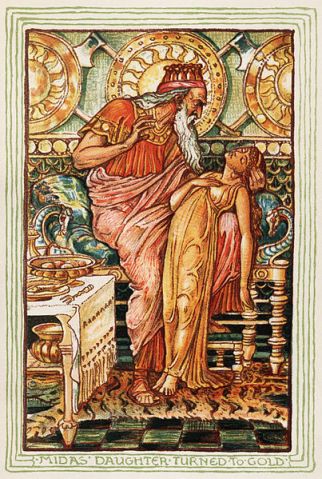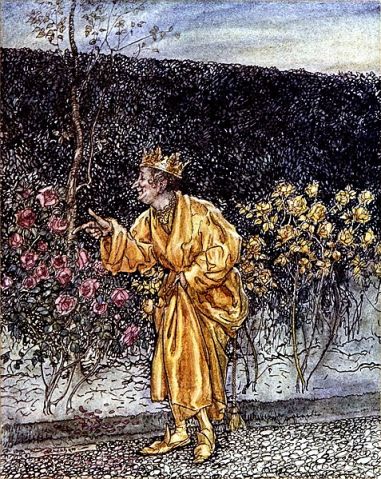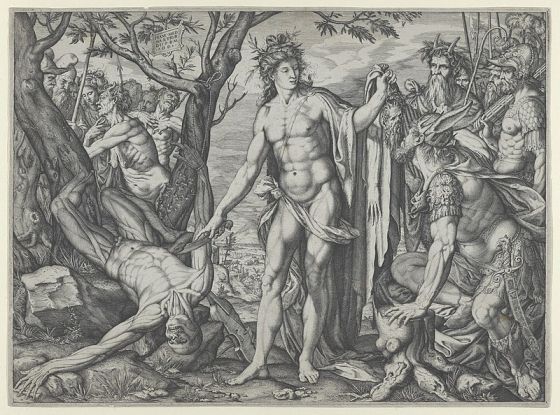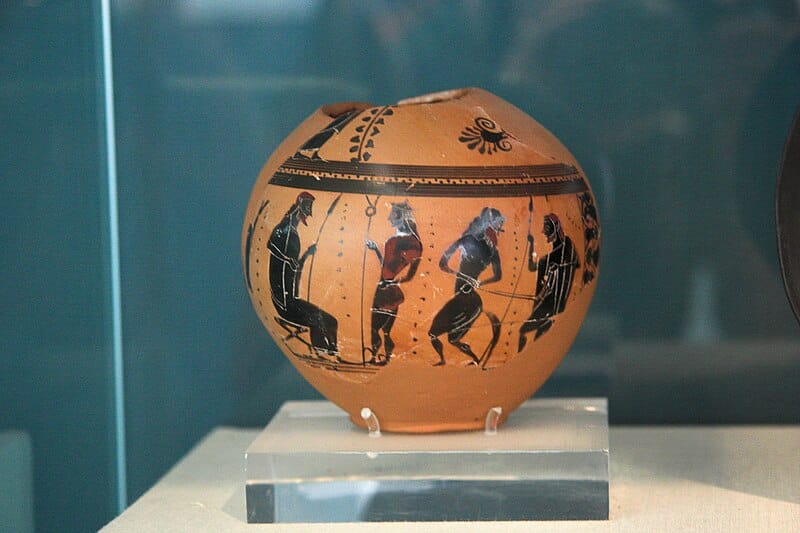In the vast tapestry of Greek mythology, few figures stand out as vividly as King Midas. Known primarily for his insatiable greed and the tragic consequences that followed, Midas’ tale is a timeless reminder of the perils of unchecked desire.
King Midas Key Facts
| Parents | Gordias and Cybele |
| Partners | Rose (daughter) |
| Siblings | None known |
| Offspring | Lityerses |
| Other names | None |
| Roman name | Midas |
| Best Known Myth | The Golden Touch |
Name and Etymology

King Midas, despite his Greek origins, doesn’t have a name rooted in the typical Greek etymology. The name “Midas” has Phrygian origins, a civilization that predates the Greeks. While the exact meaning remains a mystery, some believe it’s related to the Phrygian word for “king.”
The Romans, ever the admirers of Greek culture and mythology, adopted many Greek tales into their own lore. However, in the case of Midas, they kept his name unchanged, a testament to its unique resonance. Over time, various epithets and titles were associated with Midas, but none as iconic as “The Man with the Golden Touch.”
King Midas Family and Relationships
King Midas, the renowned ruler of Phrygia, hailed from a lineage that intertwined the mortal with the divine. He was the son of Gordias and Cybele, the Phrygian deities. His birth wasn’t surrounded by the usual fanfare of divine births in Greek myths. Instead, he was celebrated as a mortal with divine lineage. Growing up, Midas was known to have a close bond with his parents, especially his mother, Cybele, the mother goddess of Phrygia.
Midas’ marital life is often overshadowed by his more famous tales, but he did have a wife. Her name, however, varies across different sources. Some tales mention her as a loving and supportive partner, while others focus more on Midas’ relationship with his children.
King Midas’ Children
Rose: Midas’ relationship with his daughter, Rose, is central to his most famous myth. The tragic tale of the golden touch highlights not only his greed but also the depth of his love for her. The moment he turned her into a gold statue remains one of the most heart-wrenching scenes in Greek mythology.

Lityerses: Lityerses, the son of Midas, is a lesser-known figure but has his own set of tales. He was notorious for his cruel actions. Lityerses had a peculiar and brutal habit: he would challenge travelers to a harvesting contest and, upon winning, would behead them. This macabre game continued until he met the hero Heracles (Hercules). During one of Heracles’ many journeys, he accepted Lityerses’ challenge and, unsurprisingly, defeated him. In a twist of poetic justice, Heracles beheaded Lityerses, ending his reign of terror. This tale serves as a stark contrast to the stories of Midas, emphasizing the diverse nature of the consequences of unchecked desires in Greek myths.
Myths about King Midas
The Golden Touch
The tale of King Midas and his golden touch is one of the most iconic in Greek mythology. The story begins when Midas, the King of Phrygia, stumbles upon Silenus, a satyr and special friend of Dionysus, the god of wine. Recognizing Silenus, the king treats him with kindness and returns him to Dionysus. In gratitude, Dionysus offers to grant Midas any wish he desires. Overcome by avarice, the greedy king wishes that everything he touches would turn to gold.

At first, this newfound ability seems like the ultimate gift. However, the reality of his wish quickly becomes a nightmare. The food and drink he tries to consume turn to gold before reaching his mouth, rendering him unable to eat or drink. The true depth of his folly becomes heartbreakingly clear when he accidentally turns his beloved daughter, Rose, into a lifeless golden statue with a mere touch. Desperate and filled with remorse, Midas pleads with Dionysus to take back his “gift.” The god, taking pity on the distraught king, instructs him to wash in the spring of the river Pactolus. Upon doing so, Midas is freed from his golden curse. This river, located near the Aegean coast of Turkey, was said to have gold deposits, which some ancient sources attribute to Midas’ immersion.

The tale serves as a poignant reminder of the dangers of unchecked greed. As Ovid, the Roman poet, narrates in his “Metamorphoses”: “Gold in all else, he would fain have turned his very food to gold.”
The Donkey Ears

Another intriguing tale associated with the king is the story of his donkey ears. This myth begins with a musical contest between the god Apollo and the satyr Pan. Midas, for reasons known only to him, decides in favor of Pan over Apollo. Offended by this judgment, Apollo decides to give Midas the ears of a donkey. Ashamed of his new appearance, he hid his ears beneath a large turban. Only his barber is privy to the secret of the king’s transformed ears. However, unable to keep such a tantalizing secret to himself, the barber whispers it into a hole in the ground. From this very spot, reeds grow and, when swayed by the wind, they reveal the secret to the world by whispering, “Midas has ass’s ears”
This tale, while less tragic than the first, serves as a reminder of the consequences of poor judgment and the inevitability of truth coming to light.

Depiction And Characteristics
King Midas, in most depictions, is shown as a regal figure, often with a touch of gold on his person, symbolizing his famous myth. He’s sometimes shown with objects turning to gold at his touch, emphasizing his tragic gift. Beyond the physical, Midas was often portrayed as a man of insatiable greed, but also one capable of deep love, as evidenced by his relationship with his daughter.
Symbols associated with him include golden objects and, in some tales, donkey ears. The reeds, which played a part in revealing his secret in the donkey ears myth, are also sometimes associated with him.

Representations Of King Midas In Art
Throughout history, the tale of King Midas has captured the imagination of many artists. In ancient Greek pottery, he’s often depicted in the moment of realization, with golden objects around him.

The Renaissance period saw a resurgence in interest in Greek myths, and Midas was no exception. Paintings from this era often showcased the tragic moment he turned his daughter into gold. In modern times, sculptures, plays, and even musicals have drawn inspiration from his tale, emphasizing the timeless nature of his story and its moral lessons.
Mentions in Ancient Texts
King Midas, being a figure of such prominence, found mention in various ancient texts.
Ovid’s “Metamorphoses”
The Roman poet Ovid, in his magnum opus “Metamorphoses,” penned a detailed account of the Golden Touch myth. Written around 8 AD, this work provides a vivid description of Midas’ tragic gift and its consequences. A notable excerpt reads: “Gold in all else, he would fain have turned his very food to gold.”
Homer’s “Iliad”
While not central to the plot, Midas does get a passing mention in Homer’s epic, “Iliad.” Written in the 8th century BC, it serves as a testament to the king’s lasting legacy in Greek culture.
Frequently Asked Questions
He wished that everything he touched would turn to gold.
Yes, he had a daughter named Rose and a son named Lityerses.
He pleaded with Dionysus, who mercifully reversed the curse.
Apollo gave him donkey ears after Midas sided against him in a musical contest.
Reeds, which grew from a spot where his barber whispered the secret, revealed it to the world.
Yes, it’s a cautionary tale about the dangers of unchecked greed and desire.
Featured Image Credit: Abraham Janssens I, Public domain, via Wikimedia Commons

